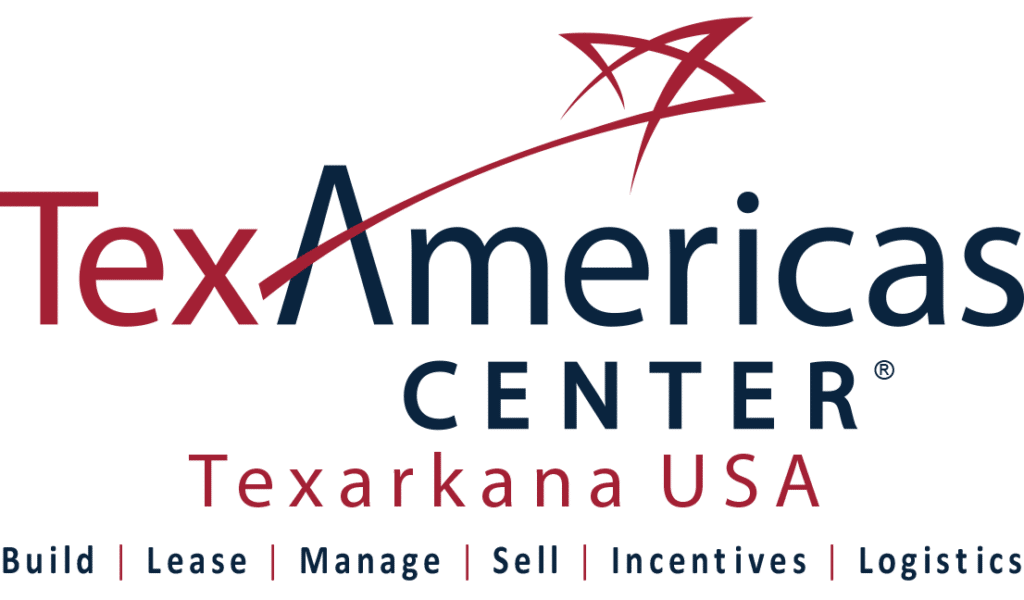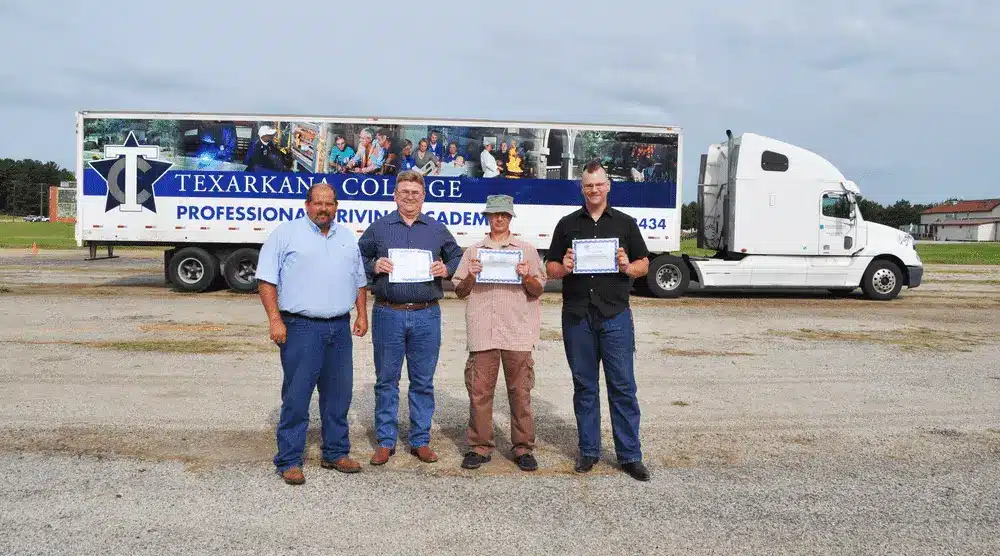Shortages abound and logistics jobs are in high demand after one of the most challenging years on record navigating a global pandemic.
Trucking jobs need to be filled to continue to transport everything from the goods we purchase online, to the gasoline we use to fuel our vehicles. Patrick De Hann, head of petroleum analysis at GasBuddy, recently indicated that a shortage of fuel haulers—and not a lack of fuel—contributed to summer fuel shortages in Missouri, Ohio, and Iowa.
In response, truck driver training programs are working overtime to try to meet demand, and the partnership between TexAmericas Center and Texarkana College is putting new, well-trained truckers on the road on a near-monthly basis.
It’s a special union that includes one of the largest mixed-use industrial parks in the nation offering its space to help a major Texarkana educational institution fill the workforce pipeline, ultimately benefiting the entire community and attracting more companies to do business long-term near the Texas-Arkansas border.
Meeting demand
Mendy Sharp, executive director of business education at Texarkana College, said the demand for a commercial driver’s license (CDL) remains high. The American Trucking Associations reported a deficit of more than 60,000 drivers across all industries, and there are more than 9,000 full-time job openings in Texas alone, with average annual starting salaries of $62,000, Sharp noted.
“The shortage is not new: People keep buying things, and the more they purchase, the more that has to be delivered,” said Renee Roberts, the college’s CDL admissions consultant. “There will always be a demand.”
A four-week, 160-hour program, the Texarkana College Professional Driving Academy requires students to split time between the driving range at TexAmericas Center and on the road gaining real-world skills and experience through a variety of driving scenarios (navigating pedestrian and traffic situations, different terrains and weather conditions, etc.).
In addition to those skills, the program includes instruction and practice on pre- and post-trip inspections, various backing techniques, parallel parking, experience with navigation tools, and logbooks/cargo documentation.
Once students graduate, they are certified and qualified to meet the employment expectations of any over-the-road companies, program organizers say, meaning graduates can travel to all 48 states and Canada. Sharp noted the importance of helping students acquire the actual CDL required to go to work, and much more.
How it works
Roberts typically is the first point of contact for people interested in truck driver training. The only prerequisites for students are a high school diploma or GED equivalent, a valid driver’s license, and a birth certificate or state ID.
She preps them to gather important documents—Social Security card, birth certificate, driver’s license, etc.—that states will require for licensing. That helps prevent delays and keeps training running more smoothly.
Tuition is $4,191, and Roberts often is the bearer of good news, as many regional workforce and vocational agencies offer tuition assistance for training. In many cases, students can get full funding from these groups and not just because of prior injuries or unemployment. Chronic medical conditions and previous work experience (in the agricultural industry, for instance) may also qualify individuals for tuition assistance.
Every four weeks, a new class begins. Trucks were upgraded in 2021, and automatic trucks help simplify some of the training instruction.
The program operated on a five-week schedule for the past six years, adjusting to a four-week schedule in January 2021, omitting the physical classroom time to help students get on the road faster. Students are required to get their CDL learner’s permit on their own time before starting actual coursework. That way, Roberts said instructors can give them “seat time” in a truck on Day 1.
Employment training
Class enrollment is small at six students, with two instructors and two trucks. Roberts typically enrolls students for the next class or two in advance to help meet demand.
The program has graduated more than 300 drivers since 2014. Roberts said officials encourage students to start applying for trucking jobs by the third week so that by graduation, those trucking companies can have the hiring process already started and employment can start as soon as the CDL is in hand.
The program also provides an introduction through the curriculum to the tanker and hazmat endorsements tank truck drivers need, but the school encourages students to first test for their CDL, and then begin to concentrate on the extra endorsement certifications.
Most graduates already have spoken to at least one over-the-road company recruiter who has visited the training yard by the time they complete the four-week course. Students train and test in 18-wheelers and apply this to their employment opportunities about 80% of the time. A small percentage of drivers choose to drive locally to be near their families.
“We have former students calling back to update us on how they’re doing or we get calls on job referrals,” Roberts said. “They are very busy from the time they graduate from school to working in the field sometimes 14 hours a day.”
Participants are predominantly men, but Roberts said the program is seeing more women enroll and graduate. Students have ranged in age from 18 to 75, she noted.
“We get moms calling about their kids graduating and asking about a CDL, then a lot of retired people who want to supplement their retirement income who can work when they want to,” Roberts said.
Looking ahead
With demand for training still high, college officials are evaluating how they can help more students, possibly by purchasing more trucks to increase class enrollment.
TexAmericas Center is on board for the long haul, too. There is ample room for the program’s classroom space, truck parking, and for students to practice basic maneuvering and grow comfortable behind the wheel. Its logistics-friendly location includes proximity to rail lines and roadways such as Interstates 30 and 49, and the Interstate 369/U.S. Route 59 north-south corridor from Houston.
College officials recently signed a new two-year lease for the TexAmericas Center space, with three one-year options.
“We have tenants who need commercial truck drivers directly or need to make sure raw materials can be brought in and shipped out for finished products,” said Scott Norton, CEO and executive director of TexAmericas Center. “We want to do everything we can to support a trained workforce.
“Five years from now, we hope to be signing another lease to continue the program. We’re excited to play a role in these efforts to grow our local economy.”




